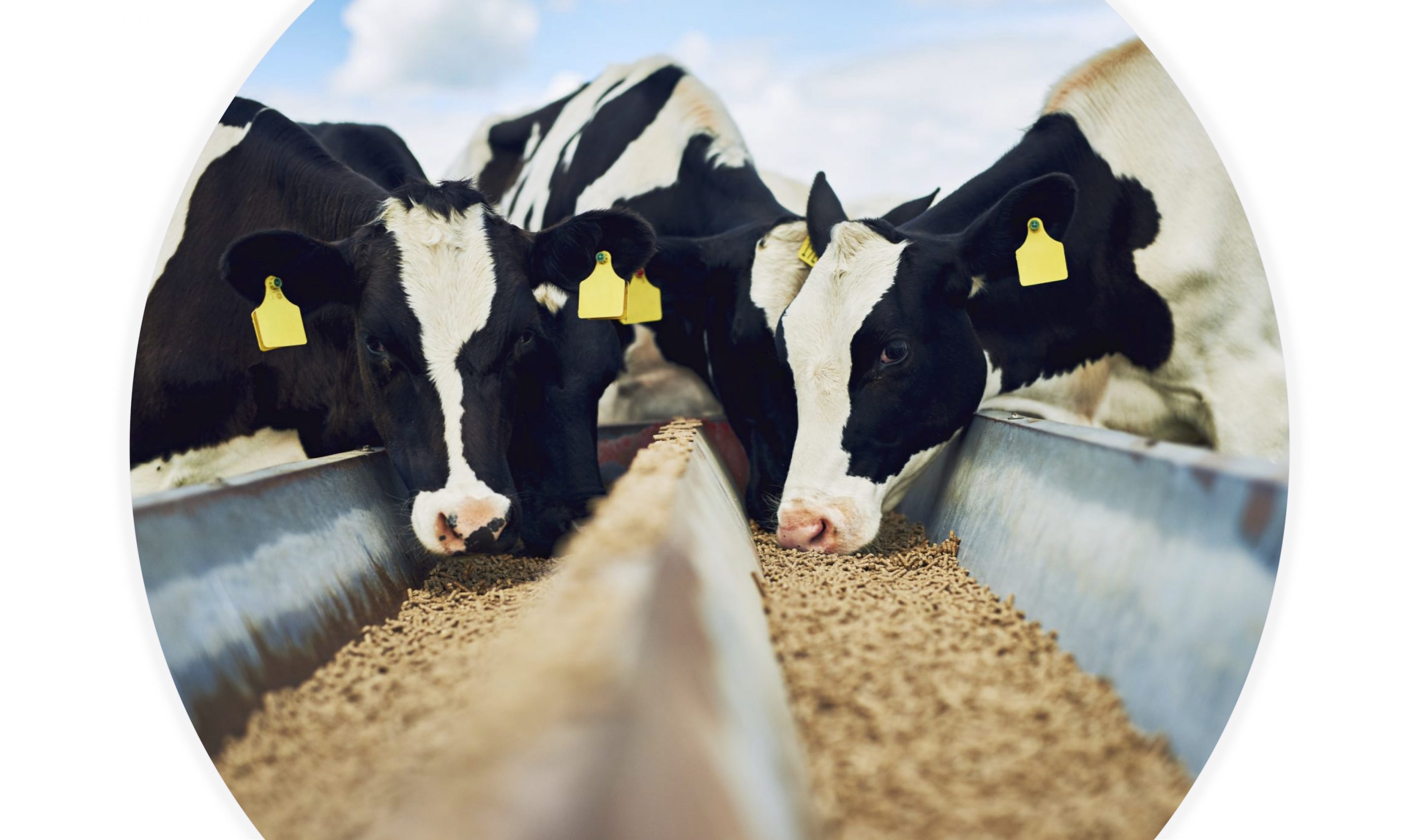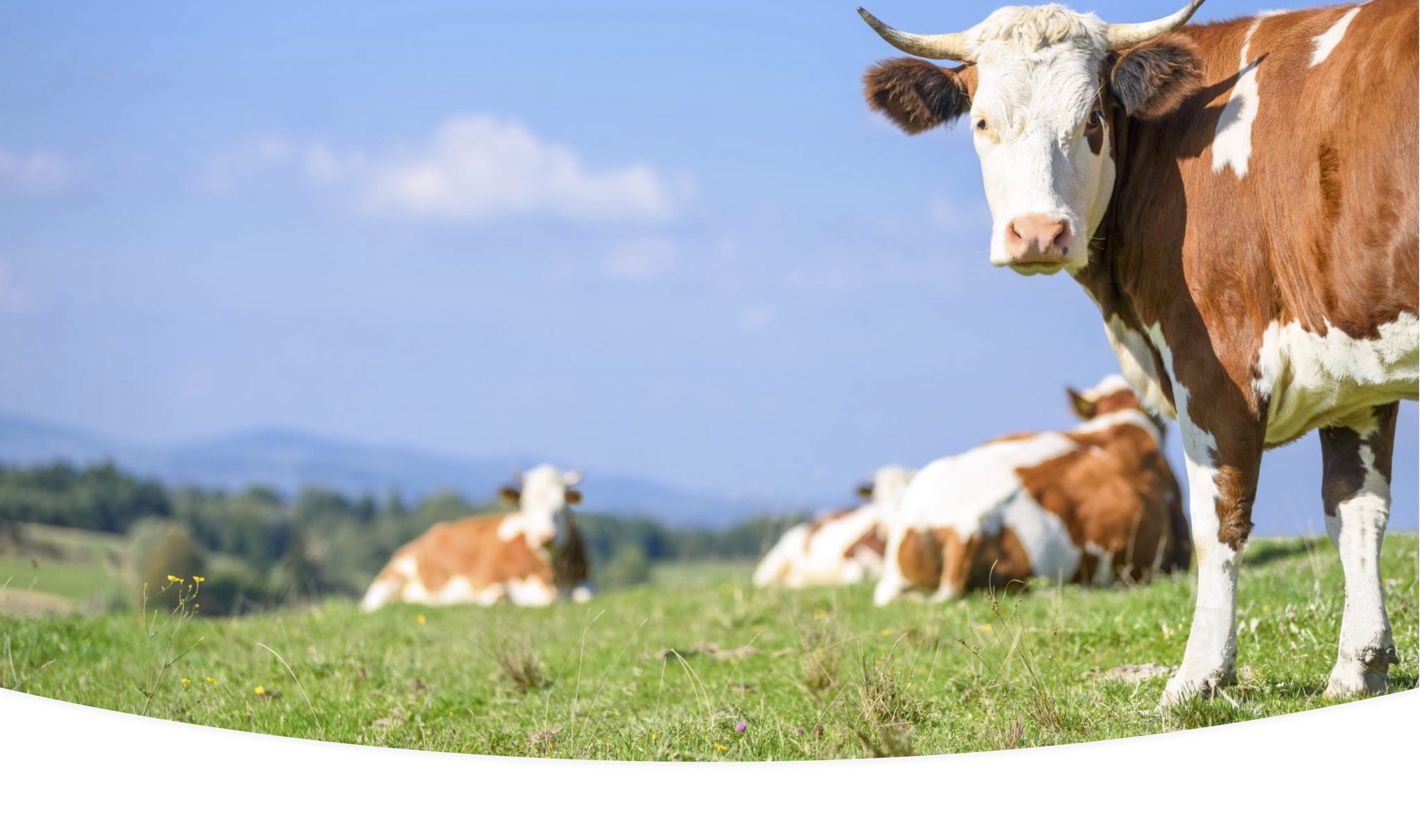Microbiome in Livestock
Why consider the microbiome when working with livestock?
All surfaces of the mammalian body are colonized with microorganisms to an extent, where the total number of microorganisms outnumbers the number of mammalian cells. There’s a microbiome of the skin, the gut, the mouth, etc., and each of these is essential for the normal function of the host – the animal.
The gut microbiome has a great influence on health. Beneficial microorganisms provide nutrients and vitamins, help digest fiber, modulate the immune system, and protect the animal from infection. A key nutrient for animal health that is produced by the gut microbiome is short-chain fatty acids (SCFA) and extensive research has shown that when the microbiome is disturbed, less SCFA is produced, leading to damage to the gut wall and inflammation in the animal. A healthy microbiome interacts with the immune system of the adult animal to keep it in balance, but also during the early life of the animals is the microbiome important for the proper development of the innate and adaptive immune system. A key role of the gut microbiome is its protection against pathogens. It simply competes with pathogen microorganisms for space and nutrients, thereby keeping intruders at bay.
Opposite, an unbalanced microbiome might compete with the animal for nutrients, produce toxins and invade host tissue leading to disease. A disturbed microbiome is correlated to autoimmune conditions as well as many metabolic and inflammatory diseases. The importance of a healthy microbiome is getting increasingly acknowledged, both for humans and animals.
The mammal microbiome changes with age, diet, and health of the animal and is therefore susceptible to influence. Pre- and probiotics are being produced to enhance “good” microorganisms and much research is being conducted to investigate how to shape a healthy microbiome capable of fighting infection and supplying the animal with the nutrients it needs for growth and resistance.
A healthy microbiome is a key to having healthy livestock with fewer infections as well as optimal utilization of nutrients for weight gain and/or milk production.

Microbiome and antibiotics
Antibiotic resistance is an increasing challenge. The use of antibiotics in swine production aimed at preventing disease unfortunately also enhances the resistance of pathogenic bacteria to antibiotics. Extensive usage of antibiotics therefore is leading to a situation where there is no available treatment for resistant pathogens. A side effect of antibiotic treatment is that it kills most of the bacteria that inhabit the gut, not only the pathogens, thereby leaving larger space and growth opportunities for the few surviving bacteria, or newcomers, thereby enhancing the selection of these resistant bacteria. In addition to the unfortunate selection, the broad removal of bacteria using antibiotics also removes symbiotic (helpful) bacteria and therefore decreases their production of beneficial molecules, such as SCFA and vitamins, and reduces the animal’s ability to digest its feed. Therefore, antibiotics should only be used as a last resort to fight infection.
As an alternative to antibiotics to prevent infection of pathogen microorganisms, the microbiome of the animals can be enhanced. A healthy microbiome can compete with harmful microorganisms and thus protect the animal from several infections. A healthy microbiome can be generated through the addition of pre- and probiotics to the feed as supplements. This theory is an active field of development and has been taken into practice at several different sites. However, there is still much to be learned to fully take advantage of the animal’s microbiome communities.
Microbiome and nutrient uptake
Before ingested food is digested and absorbed, it is in contact with the gut microbiome. The nutrient processing and availability, therefore, depend on the activities of the gut microbiome. The microbiome is capable of digesting fibers otherwise inaccessible to the animal, producing short-chain fatty acids that work as energy and signaling molecules to animals, and generating vitamins (mainly B and K). And so forth. The list of roles of the gut microbiome for metabolism is long, and it is not surprising that the health of the gut microbiome affects the animal’s ability to take up energy from the feed. Optimal utilization of nutrients can improve weight gain in livestock as well as milk production in cattle. Thus, a healthy microbiome not only improves the health and well-being of your animals – but also holds the potential to improve your economic balance as a farmer.
Dr. Stafford Vigors, a researcher at a Food Research Centre in Ashtown, Dublin, described his research on the role of the microbiome for feed efficiency in a post on the website microbiologysociety.org (Posted on October 24, 2018):
”In the early stages of my research, the focus was on data and sample collection on the research farm. This led to initial wet lab work such as RNA and DNA extractions and a lot of PCR, allowing us to gain an understanding of some of the factors impacting feed efficiency. Then, I jumped in at the deep end and attempted to become a bioinformatician, using more advanced techniques such as RNA- and 16s rRNA sequencing to assess the factors influencing feed efficiency.
We identified that more efficient pigs have improved nutrient digestibility. The intestinal microbiota plays a key role in nutrient breakdown and hence could be a key driver of changes in nutrient digestibility and subsequent animal performance. Similarly, the commensal gut bacteria interact with the immune system, influencing animal health. Previously, changes in the immune response of pigs that differ in feed efficiency have been identified, a factor is potentially driven by changes in the gut microbiota.”
Read the full article here:
https://microbiologysociety.org/blog/could-the-gut-microbiome-influence-livestock-growth.html
Project workflow
At Biomcare we offer guidance on microbiome projects, as well as sequencing and data analysis. All you need to do is collect the samples and ask the questions.

